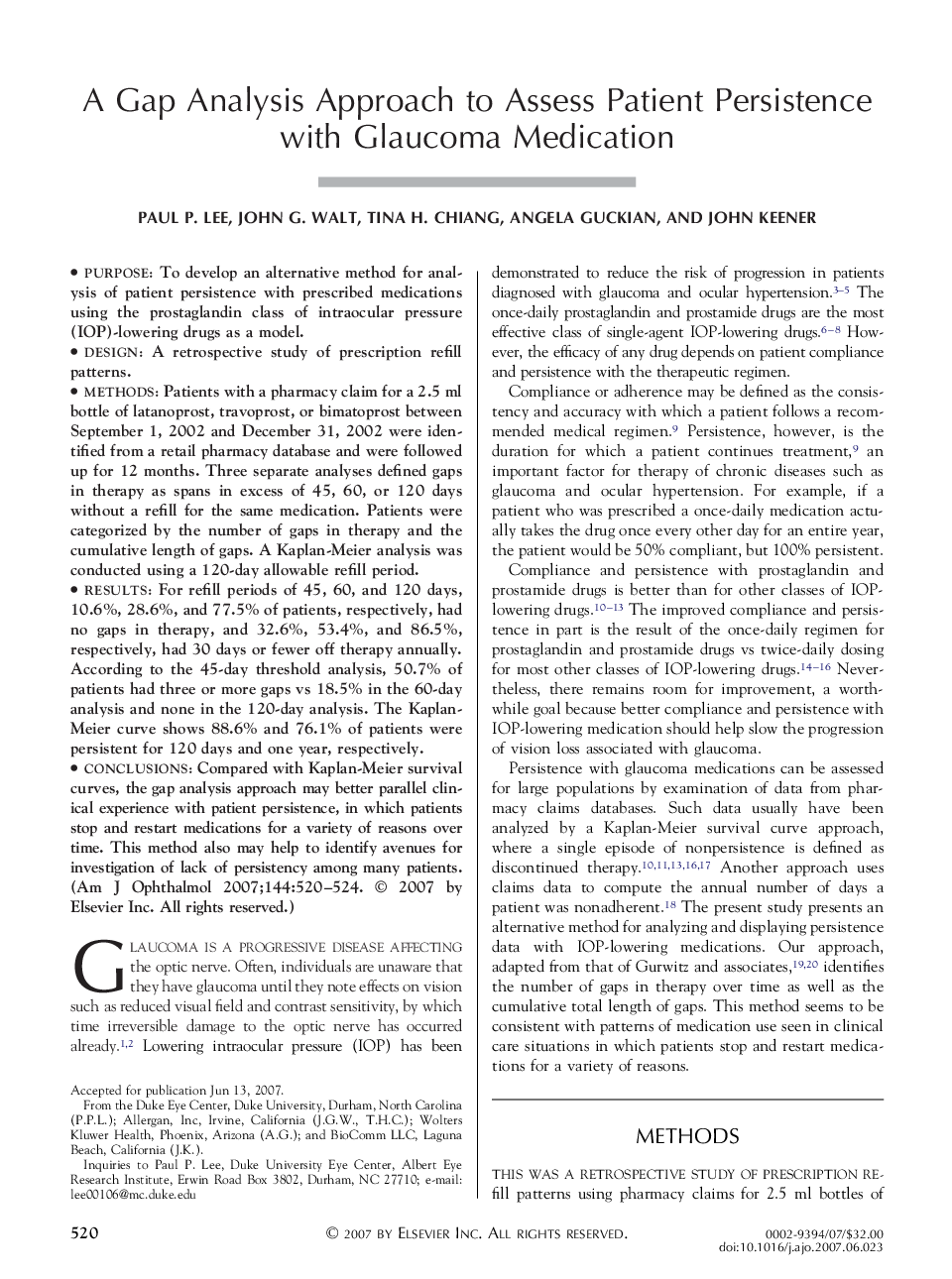| Article ID | Journal | Published Year | Pages | File Type |
|---|---|---|---|---|
| 4004579 | American Journal of Ophthalmology | 2007 | 5 Pages |
PurposeTo develop an alternative method for analysis of patient persistence with prescribed medications using the prostaglandin class of intraocular pressure (IOP)-lowering drugs as a model.DesignA retrospective study of prescription refill patterns.MethodsPatients with a pharmacy claim for a 2.5 ml bottle of latanoprost, travoprost, or bimatoprost between September 1, 2002 and December 31, 2002 were identified from a retail pharmacy database and were followed up for 12 months. Three separate analyses defined gaps in therapy as spans in excess of 45, 60, or 120 days without a refill for the same medication. Patients were categorized by the number of gaps in therapy and the cumulative length of gaps. A Kaplan-Meier analysis was conducted using a 120-day allowable refill period.ResultsFor refill periods of 45, 60, and 120 days, 10.6%, 28.6%, and 77.5% of patients, respectively, had no gaps in therapy, and 32.6%, 53.4%, and 86.5%, respectively, had 30 days or fewer off therapy annually. According to the 45-day threshold analysis, 50.7% of patients had three or more gaps vs 18.5% in the 60-day analysis and none in the 120-day analysis. The Kaplan-Meier curve shows 88.6% and 76.1% of patients were persistent for 120 days and one year, respectively.ConclusionsCompared with Kaplan-Meier survival curves, the gap analysis approach may better parallel clinical experience with patient persistence, in which patients stop and restart medications for a variety of reasons over time. This method also may help to identify avenues for investigation of lack of persistency among many patients.
